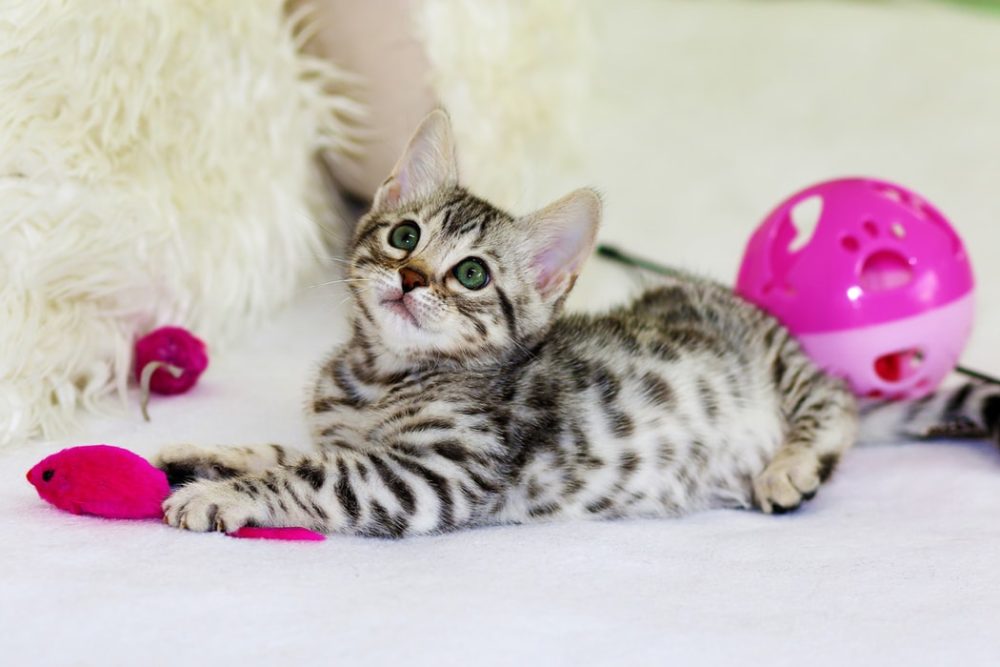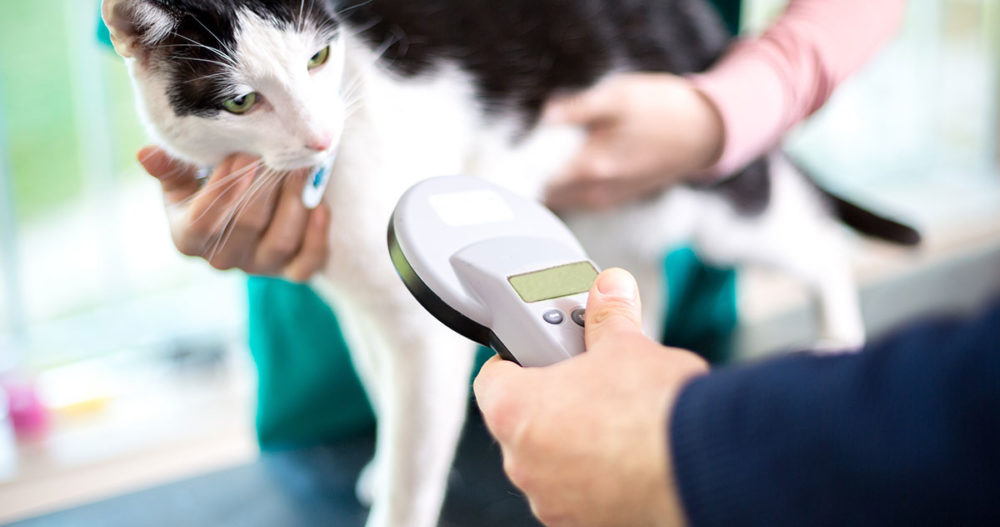
When can I get my kitten microchipped?
Unlike the needles for vaccination, the needle to insert a microchip is much larger, and the kitten may experience momentary pain and discomfort while the chip is inserted. For this reason, microchipping is usually done when the kitten is a little bit older. The chip itself is the size of a small grain of rice and is inserted under the skin between their shoulder blades. The kitten won’t feel the disk once the vet has inserted it, and the chip has a special protective coating around it, which means it won’t disintegrate during the animal’s lifetime. Visit here to learn about the average lifespan of a cat.
How does the microchip work?
The microchip will have a unique number within it, which identifies your kitten. This number will be linked to a central database that will contain your details as the owner. A handheld scanner can read the chip, and the vet will check the disk with a scanner once it has been inserted and then complete the paperwork.
At what age can you microchip your kitten safely?
Microchips can be inserted at any age into an adult cat, but the recommended minimum age for a kitten is around nine weeks, so if they are robust and big enough – usually around 2lb in weight – then alongside their first vaccination. Some people wait until the kitten is being neutered and then microchip while they are asleep under general anesthetic. The kitten will not usually be sedated or have a general anesthetic to have a microchip inserted. Zoo Awesome published a terrific care guide for your three-month-old kitten.
What are the advantages of getting my kitten microchipped?

- If your cat is gets lost and is picked up by someone else and handed into the vets or a rescue center, they will always automatically check the animal for a microchip, and you can be reunited with your pet
- If your cat is injured in an accident and passes away, if the body is found and taken to a vet, then you will at least have the peace of mind of knowing what happened to them. Vets and the police will always try and identify the owner
- Your details will remain in the database. There are stories of cats and dogs being reunited with their owners after many years of absence. Always remember to update the database if you move house or change your phone number
What to do in case of loss or theft of my pet?
The best option to locate a lost or stolen animal as soon as possible is using a microchip. Even if your pet carries an identifying badge or collar, those can always be dropped, extracted, lost, etc., so it is so important to have updated all data continually.
Therefore, if this happens, the first thing we have to do is immediately notify the following authorities or institutions, indicating the number of the chip and the name of the animal, our personal data and, if we know it, the date and place where our pet was lost or stolen:
- To the Nature Protection Service of the Civil Guard.
- To the Local Police.
- To the center where we adopt the animal if it is taken.
- To the City Hall.
In case you have gone on a trip, or for whatever reason, your pet has been lost in another autonomous community, you must notify the two cities as soon as possible to expedite the procedures because each town has its registry and regulations.
And if you are the one who encounters an abandoned animal, we recommend that the first thing you do is look if it has any identifying badge or collar to notify its owners. If not, you should go as soon as possible to a veterinarian to I can read your microchip.
Is it the law for cats to be microchipped?

No, not for cats, but it is the law for dogs to have a microchip from the age of 8 weeks old, and this has been UK law since 2016.
Why microchip your dog or cat?
It is not at all expensive to install this microchip in the animal’s body. In some cases, an annual fee must be paid for the service. If we live in an apartment or our pet does not go out without our supervision, we should also put this identification system. Accidents can occur in the blink of an eye.
There are many cases of dogs or cats that run away because they get scared or because they see another animal, and then they are not recovered. You can also keep the door open, and the animal leaves without anyone noticing. Examples like these abound.
Also, a standard collar can easily be removed by a person or even the pet (for example, when caught in a fence). In some cities where natural catastrophes are frequent (earthquakes, hurricanes, tornadoes, etc.), most people place a microchip on their animals. In full emergency, they get scared and can even walk tens of kilometers if they have become disoriented.
Among the main reasons for placing a microchip to your dog or cat are:

Increased chance of return if lost
In a matter of hours, the animal can be reunited with its family when identified. That is ideal in those situations when, for example, we go on vacation. Also, it is the right solution if there is any problem that makes the animal escape. It is safer than a necklace with a plate.
Lower risk of being sold
If the animal is stolen because it is a special breed, many buyers first take the precaution of having the microchip checked to know the owner’s data and verify that the seller is the rightful owner.
It is a painless procedure

It is placed just like an injection or vaccine. In a matter of minutes, the dog or cat \has its microchip installed, which does not generate any complications in its daily life. They can not be removed from the skin once installed, so it becomes a 100% effective system.
Microchipping is not the same as identifying
There are pets that, although they have the subcutaneous chip, they are not identified because their data has not been registered or is incorrect. Maybe they have not been updated, so in case of losing their owner cannot be located and will remain in the hands of a protector. According to specific regulations, animals must be sold or adopted identified by a microchip, that is, with the microchip already implanted and discharged. “It is not worth telling us that we have to activate it,” says Pifarré, which is something that corresponds to the owner.
There are sites selling animals that ensure that the animal is microchipped, but that is not enough. It must be registered because, without any information, the microchip is useless. There is a regulation marked by the European Union that regulates the identification, which allows knowing if it contains the corresponding information and to know who owns the cat.








